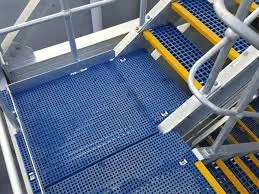
-
 Afrikaans
Afrikaans -
 Albanian
Albanian -
 Amharic
Amharic -
 Arabic
Arabic -
 Armenian
Armenian -
 Azerbaijani
Azerbaijani -
 Basque
Basque -
 Belarusian
Belarusian -
 Bengali
Bengali -
 Bosnian
Bosnian -
 Bulgarian
Bulgarian -
 Catalan
Catalan -
 Cebuano
Cebuano -
 China
China -
 China (Taiwan)
China (Taiwan) -
 Corsican
Corsican -
 Croatian
Croatian -
 Czech
Czech -
 Danish
Danish -
 Dutch
Dutch -
 English
English -
 Esperanto
Esperanto -
 Estonian
Estonian -
 Finnish
Finnish -
 French
French -
 Frisian
Frisian -
 Galician
Galician -
 Georgian
Georgian -
 German
German -
 Greek
Greek -
 Gujarati
Gujarati -
 Haitian Creole
Haitian Creole -
 hausa
hausa -
 hawaiian
hawaiian -
 Hebrew
Hebrew -
 Hindi
Hindi -
 Miao
Miao -
 Hungarian
Hungarian -
 Icelandic
Icelandic -
 igbo
igbo -
 Indonesian
Indonesian -
 irish
irish -
 Italian
Italian -
 Japanese
Japanese -
 Javanese
Javanese -
 Kannada
Kannada -
 kazakh
kazakh -
 Khmer
Khmer -
 Rwandese
Rwandese -
 Korean
Korean -
 Kurdish
Kurdish -
 Kyrgyz
Kyrgyz -
 Lao
Lao -
 Latin
Latin -
 Latvian
Latvian -
 Lithuanian
Lithuanian -
 Luxembourgish
Luxembourgish -
 Macedonian
Macedonian -
 Malgashi
Malgashi -
 Malay
Malay -
 Malayalam
Malayalam -
 Maltese
Maltese -
 Maori
Maori -
 Marathi
Marathi -
 Mongolian
Mongolian -
 Myanmar
Myanmar -
 Nepali
Nepali -
 Norwegian
Norwegian -
 Norwegian
Norwegian -
 Occitan
Occitan -
 Pashto
Pashto -
 Persian
Persian -
 Polish
Polish -
 Portuguese
Portuguese -
 Punjabi
Punjabi -
 Romanian
Romanian -
 Russian
Russian -
 Samoan
Samoan -
 Scottish Gaelic
Scottish Gaelic -
 Serbian
Serbian -
 Sesotho
Sesotho -
 Shona
Shona -
 Sindhi
Sindhi -
 Sinhala
Sinhala -
 Slovak
Slovak -
 Slovenian
Slovenian -
 Somali
Somali -
 Spanish
Spanish -
 Sundanese
Sundanese -
 Swahili
Swahili -
 Swedish
Swedish -
 Tagalog
Tagalog -
 Tajik
Tajik -
 Tamil
Tamil -
 Tatar
Tatar -
 Telugu
Telugu -
 Thai
Thai -
 Turkish
Turkish -
 Turkmen
Turkmen -
 Ukrainian
Ukrainian -
 Urdu
Urdu -
 Uighur
Uighur -
 Uzbek
Uzbek -
 Vietnamese
Vietnamese -
 Welsh
Welsh -
 Bantu
Bantu -
 Yiddish
Yiddish -
 Yoruba
Yoruba -
 Zulu
Zulu
FRP Storage Tanks - Durable and Cost-Effective Solutions
Understanding FRP Storage Tanks Advantages and Applications
FRP (Fiberglass Reinforced Plastic) storage tanks are increasingly becoming the preferred choice for various industries due to their unique properties and advantages. These tanks are composed of a thermosetting plastic reinforced with fiberglass, which enhances their strength and durability. As industries continue to evolve, the demand for FRP storage tanks grows, thanks to their versatile applications and benefits.
One of the primary advantages of FRP storage tanks is their resistance to corrosion. Unlike traditional metal tanks, which can succumb to rust and deterioration when exposed to harsh chemicals or varying weather conditions, FRP tanks maintain their integrity over time. This corrosion resistance makes them ideal for storing a wide range of substances, from water and chemicals to other hazardous materials.
Understanding FRP Storage Tanks Advantages and Applications
FRP storage tanks also boast excellent thermal insulation properties. These tanks can maintain stable temperatures for stored materials, which is crucial in industries where temperature fluctuations can affect product quality. This insulative property is particularly beneficial in applications such as food processing, pharmaceuticals, and chemical manufacturing, where the temperature of stored substances must be kept constant.
frp storage tank

Moreover, the customization options available with FRP tanks make them highly adaptable to specific industry needs. Manufacturers can tailor the size, shape, and design of these tanks to suit particular applications, ensuring optimal performance. This level of customization extends to the types of resins and fiberglass used, allowing for tanks that can withstand specific environmental conditions or comply with regulatory standards.
The environmental impact of FRP storage tanks is also worth mentioning. Their longevity and resistance to corrosion means reduced replacement frequency, minimizing waste and resource consumption. In addition, the production of FRP materials often involves processes that emit fewer pollutants compared to traditional materials, making these tanks a more environmentally friendly option.
Lastly, the cost-effectiveness of FRP tanks cannot be overlooked. While the initial investment may be higher than traditional tanks, the long-term savings on maintenance, replacement, and operational efficiency make them a wise choice for many businesses. Given their durability and performance, FRP storage tanks can lead to significant financial benefits over their lifespan.
In conclusion, FRP storage tanks represent an innovative solution for various industries looking for reliable, durable, and cost-effective storage options. Their resistance to corrosion, lightweight design, thermal insulation capabilities, and customization options make them a trend worth considering in modern storage solutions. As industries continue to seek efficiency and sustainability, the role of FRP storage tanks will undoubtedly become more prominent.
Latest news
-
High-Quality Fiberglass Car Bodies Durable GRP Car & Boat Body SolutionsNewsJul.08,2025
-
High-Quality Fiberglass Dual Lamination Product Manufacturer Durable FRP & GRP Dual Lamination SolutionsNewsJul.08,2025
-
Rectangular Tank with Dimensions for GRP Calculation Custom Fiberglass GRP Rectangular TanksNewsJul.07,2025
-
High-Quality Fiberglass Weir Custom FRP Weir & Fiberglass Tanks ManufacturerNewsJul.07,2025
-
CPVC FRP Pipe A Reliable Choice for Industrial Applications High Strength & Corrosion ResistanceNewsJul.07,2025
-
Fiberglass Scrubber for Effective Cleaning and Stain Removal – Superior Performance in Various ApplicationsNewsJul.06,2025









